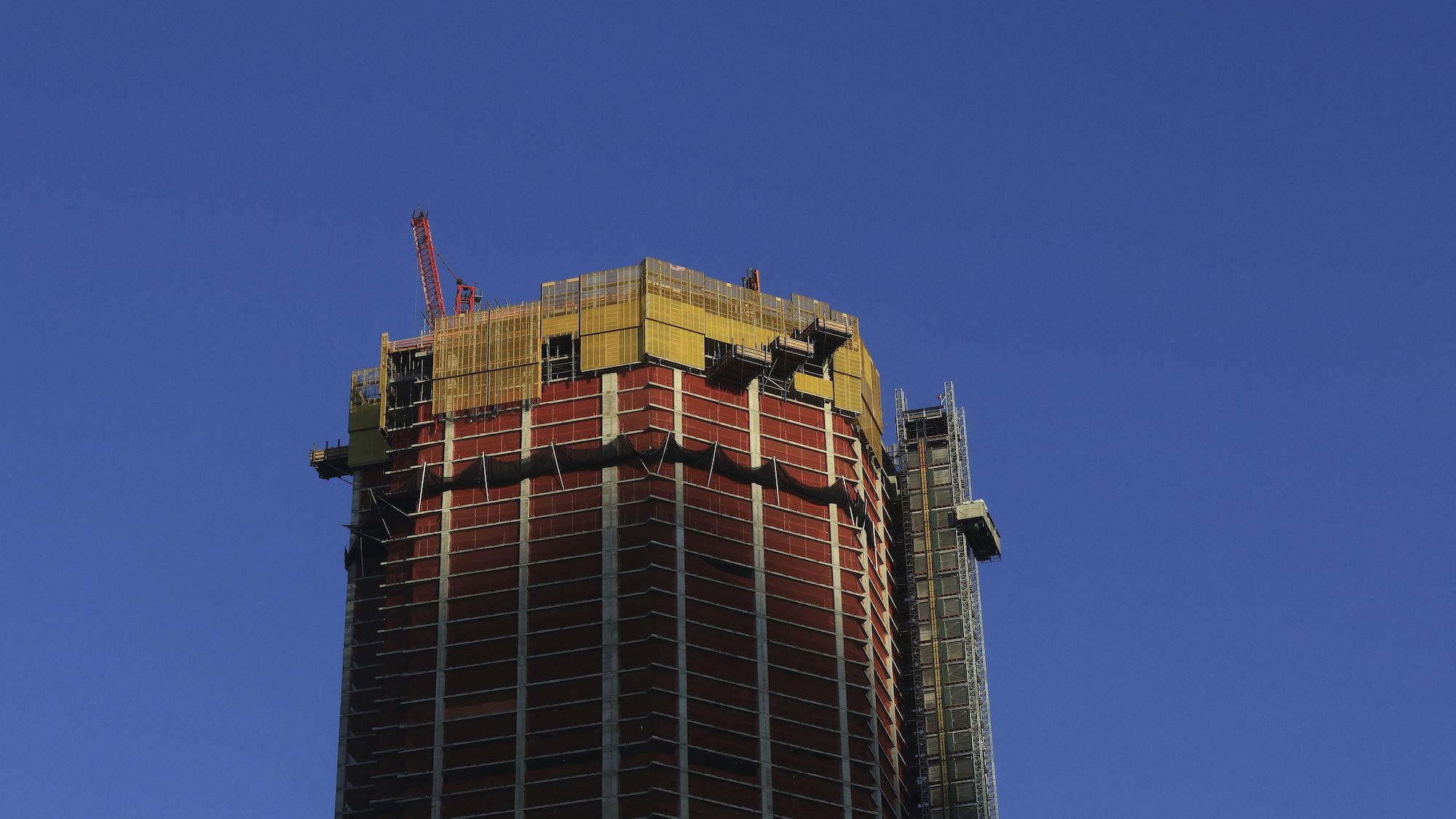
Gary Hershorn/Getty Images
Rising construction costs and a tight labor market are slowing a nearly decade long apartment boom, likely easing a burgeoning glut at the top end of the market that has been forming across the U.S.
Multifamily building permits have fallen each month since March, according to federal data. That type of slowdown suggests there should be less new apartment construction over the next two years, the typical time it takes to build an apartment property of any scale.
Analysts say absorption of new units remains strong right now, despite the falloff in permitting. While landlords may be frustrated that their projects are taking longer to complete, the slowdown in new building should help reduce oversupply concerns and could enable owners to raise rents at a faster pace next year.
If supply is pinched, rent negotiations “would definitely favor landlords more than tenants going forward,” said Barbara Byrne Denham, senior economist at Reis, a property consultancy.
Some big apartment developers have already indicated that budding concerns about oversupply are abating.
“It appears we’re beginning to see some early signs of relief in supply, as both permits and starts have been declining in our markets for most of the year,” Timothy Naughton, chief executive of apartment developer AvalonBay Communities Inc., told analysts on a conference call last month.
AvalonBay may start benefiting from less development by as soon as late 2019, he said.
Developers raced to put up new multifamily buildings after the recession in 2009, a scramble generated by the dearth of investment during the downturn and the growing demand for rental properties after the housing bust.
Rents steadily rose on stronger demand from young people getting their first places and consumers who couldn’t obtain financing to purchase homes. But that growth has slowed over the last couple of years.
In 2011, developers completed 129,900 units in buildings with at least five units, according to the Census Bureau. Completed properties with at least five units have risen each year since then, and developers added almost 347,000 units in 2017. As supply has grown, rent growth has weakened, hitting 2.9% nationally in the third quarter compared with more than 5% three years earlier, according to real-estate analytics firm RealPage Inc.
“The demand is there,” said Paula Munger, the National Apartment Association’s director of industry research and analysis, referring to tenants. “But labor’s a big deal. It varies by position, but in general that’s what we’re hearing from our members. The actual completions are being more and more delayed for that reason.”
Apartment developers on the West Coast are particularly struggling to finish off their projects. Equity Residential, the nation’s largest apartment owner, found that a dearth of construction workers in the Los Angeles area means 2,000 rental units the company expected to be delivered this year now will arrive in 2019 instead, Chief Operating Officer Michael Manelis said in October.
Essex Property Trust, an apartment firm with holdings in Northern and Southern California and the Seattle region, also indicated recently that the 3,000 units it expected this year will instead arrive in 2019, and another 3,000 rentals it forecast for 2019 won’t come online until 2020.
“With housing demand continuing to exceed supply, we believe that housing shortages on the West Coast will continue,” said Essex CEO Michael Schall.
In addition to rising costs, worries about future job growth—a key driver of apartment demand—and the slower rent growth has damped permitting activity, Ms. Denham said.
In September, builders pulled permits to construct 351,000 units in new properties with at least five units on an annualized basis, down 9% from a year earlier, according to the latest data available from the Census Bureau. In March, that figure was 486,000.
Ms. Munger said demand for apartments remains robust. Luxury rentals in large coastal markets have faced the most pressure after years of building, she added.
Construction firms in California are paying more to ensure they have staff on hand. Carpenter and laborer wages at the median rose 10%, according to the Bureau of Labor Statistics.
The Association of General Contractors, a trade group, said in October, the number of construction jobs nationally hit 7.3 million, the highest level since April 2008.
The post Apartment Developers Are Slowing Construction. That Could Mean Higher Rents. appeared first on Real Estate News & Insights | realtor.com®.
